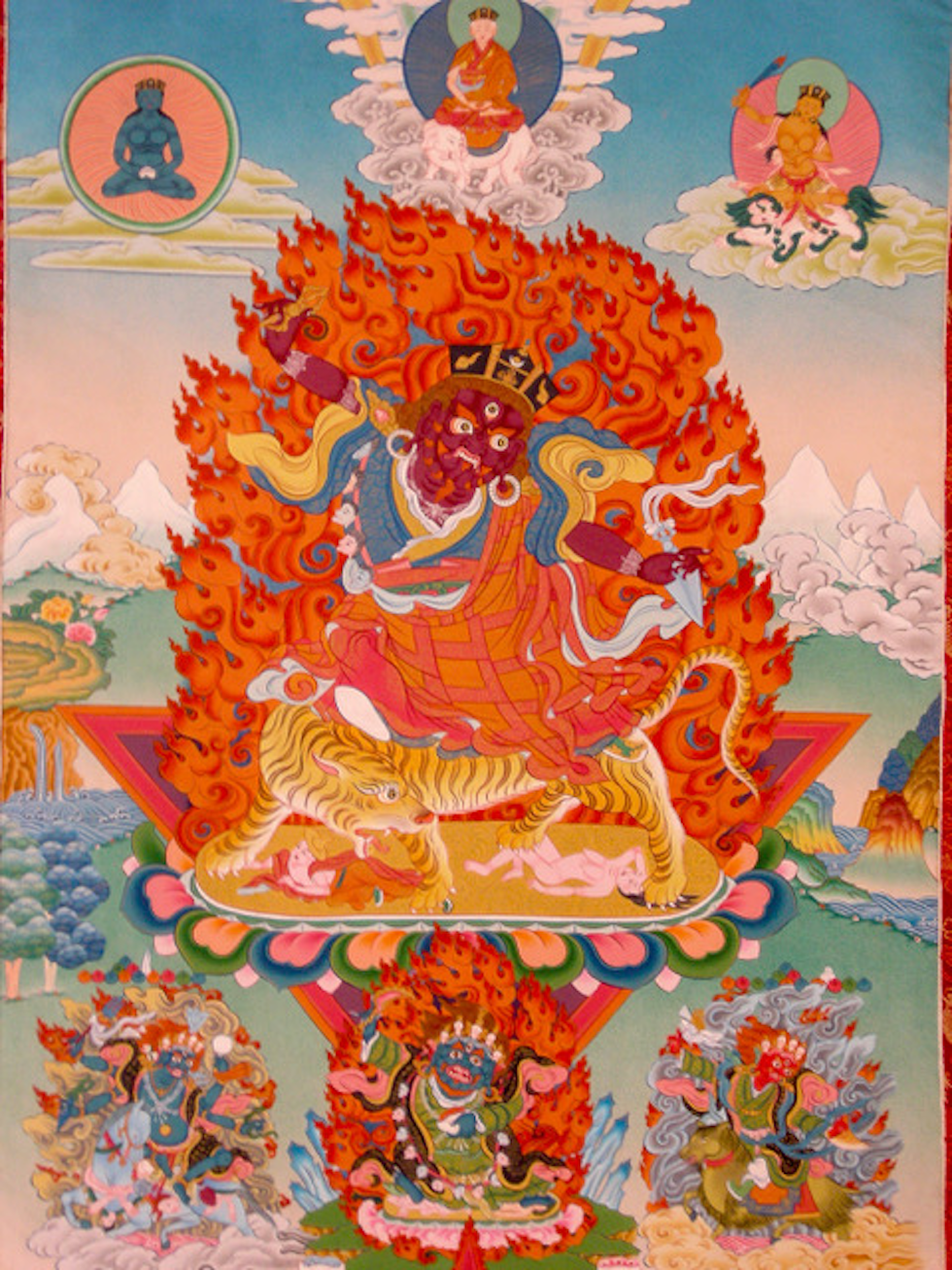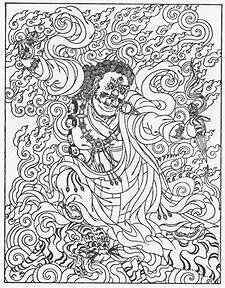
The Sadhana of Mahamudra
On this page learn about:
Zoom Meeting Schedule
About the Sadhana and its origin
Watch a Presentation of the Terma
Recommended Buddhist Reading
How to purchase the text
Monthly Study Group via Zoom
The Sadhana of Mahamudra is a terma, a "hidden treasure teaching" received by Chögyam Trungpa Rinpoche in 1968 while on retreat at the Tagtsang Retreat Caves in Bhutan. Learn the history behind this terma, watch a presentation and find out when our monthly online study group meet.
Online Schedule of the Sadhana of Mahamudra
We meet online via Zoom once per month. Sign up to our newsletter to stay up-to-date when we meet.
Zoom Meeting Schedule:
There will be a short talk, after which we will recite The Sadhana (it will be scrolled on-screen).
6:45 PM - 7:00 PM ET: Zoom Room open for arrival and conversation
7:00 PM - 7:30 PM ET: Meditation (you may join in at any time)
7:35 PM - 8:30 PM ET: Short Talk and Recitation of The Sadhana. The text will be scrolled on-screen.
Open to all. By Donation.
How to join Zoom
About the Sadhana written by Chögyam Trungpa
The Sadhana of Mahamudra is an extraordinary poetic practice text that beautifully and powerfully expresses the essence of the Vidyadhara Chögyam Trungpa Rinpoche’s dharma transmission to the West.
It is a liturgy—both teaching and practice—written in traditional style by Chögyam Trungpa Rinpoche half a century ago, not long after he began working with western students. It is inspired by Padmasambhava (also known as Guru Rinpoche), an Indian teacher and yogi who was instrumental in bringing buddhadharma to Tibet. Indeed, the Sadhana is a terma, a teaching Guru Rinpoche magically concealed for a future time when it might be needed, and it was discovered by Chögyam Trungpa in our own times, when it is sorely needed, indeed.
The Sadhana underscores the profound simplicity of the dharma as presented by both the Kagyu-Mahamudra and Nyingma-Dzogchen lineages of Tibetan Buddhism. It directly addresses the spiritual materialism, abuse of power, and degeneration of practice that compromised Buddhism in Tibet and threaten to do the same in the West. It helps practitioners steer a middle path between the extremes of empty intellectualism and blind devotion.
Born in Tibet written by Chögyam Trungpa — meditation master, scholar, and artist.
In the epilogue to this autobiographical book Born in Tibet, Trungpa Rinpoche describes the process prior to writing this sadhana in the cave of Taktsang, September 1968:
“During my retreat at Tagtsang I was able to reflect on my life and particularly on how to propagate the dharma in the West. I invoked Guru Rinpoche and the Kagyü forefathers to provide vision for the future. For a few days nothing happened. Then there came a jolting experience of the need to develop more openness and greater energy. At the same time there arose a feeling of deep devotion to Karma Pakshi, the second Karmapa, and to Guru Rinpoche. I realized that in fact these two were one in the unified tradition of mahamudra and ati. Filled with the vivid recognition of them and their oneness, I composed in two days the Sadhana of Mahamudra, of twenty-four pages.”
Sadhana of Mahamudra Presentation Video
Watch a video recording and talk by John Baker on The Sadhana of Mahamudra
John Baker discusses and gives background on The Sadhana Of Mahamudra at New York Buddha Dharma (now Path of Awakening Buddhist Center)
Recommended Reading
Historical Comments on The Sadhana of Mahamudra by Chögyam Trungpa Rinpoche
The Chronicle Project: “About the Sadhana”
“It is hoped that this Sadhana will be practiced by those who are prepared to see the living dharma within. The Sadhana will help to purify the present degenerate state of philosophy and meditation practice. It will help to bring peace in the warfare waged by materialism.”
From The Sadhana of Mahamudra
More Resources
The story of The Sadhana of Mahamudra, Shambhala Publications. Read an excerpt from the introduction to the Collected Works of Chogyam Trungpa, Volume Five.
Historical Comments on The Sadhana of Mahamudra. Read an article from The Chronicles of Chögyam Trungpa Rinpoche.
Watch a Zoom recording of a Buddhist Chanting Class.







